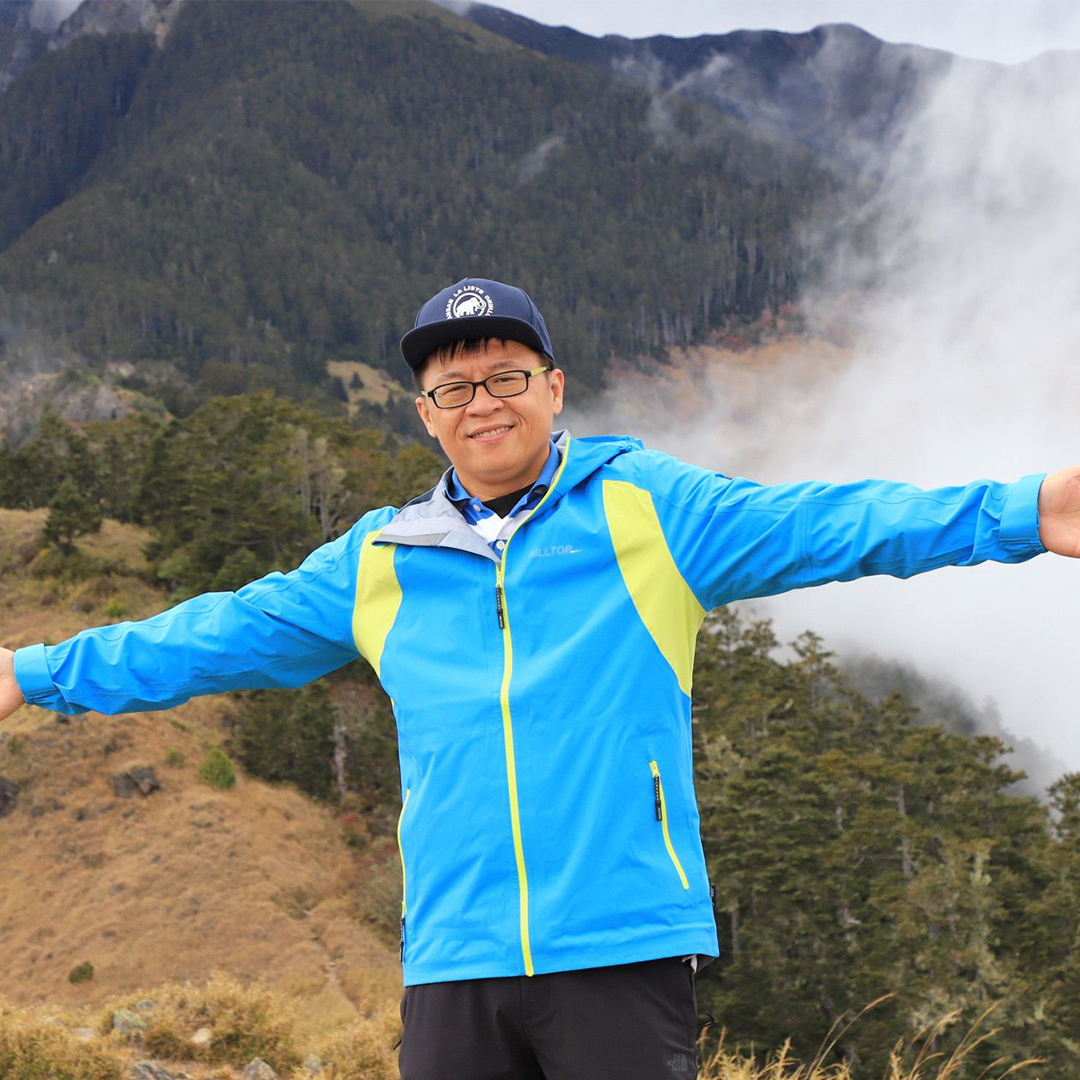
For those eager to truly immerse themselves in the charm of Hakka towns, engaging in the art of botanical dyeing, savoring traditional Hakka glutinous rice cakes, sipping on Hakka pounded tea, and exploring the craft of oil-paper umbrella making are highly recommended! And let's not forget to indulge in the delightful and creative Hakka cuisine! Taking a leisurely stroll along the ancient canal hiking trail offers a fascinating glimpse into the history of the Hakka ancestors who hand-carved caves to discover water sources more than a century ago. Follow the trail of these ancient canal caves in Dahu! Embark on a relaxed stroll around the Hakka town in Miaoli for an unforgettable experience!

The Tongluo Tea Factory is situated on the hilly plateau of Tongluo, Miaoli. The plantation primarily cultivates Oriental Beauty Tea, honey fragrance black tea, green tea, and oolong tea. Emphasizing natural farming methods and ecological conservation, the plantation offers an expanse of lush greenery against the backdrop of Shuangfeng Mountain. The entrance fee is NT$100, fully redeemable with purchases. The architecture of the tea factory follows the contours of the mountains, symbolizing the migration of Hakka people.


One of the Hakka specialty teas produced at the Tongluo Tea Factory is Oriental Beauty Tea. Primarily cultivated by the Hakka people, this tea encountered an interesting turn of events when small green insects were discovered nibbling on the leaves. Rather than discarding the leaves, the tea growers harvested them and sold them up north. To their surprise, the distinct aroma captivated British merchants, swiftly selling out all the tea. Upon returning home and sharing their success, they were ridiculed for what others perceived as a tall tale. This led to Oriental Beauty Tea being dubbed Pengfeng Tea (Braggart's Tea). These small green insects were later identified as smaller green leafhoppers. Inside the Tongluo Tea Factory, the luminous interior space and large windows provide stunning views of the tea plantation.
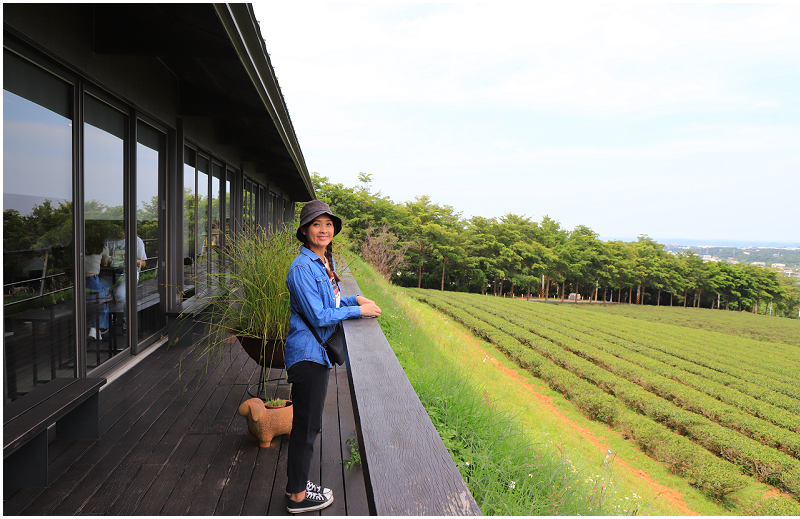
Standing on the outdoor wooden deck, basking in the refreshing autumn breeze of the mountainous forest, you can get a full panorama of the tea plantation and the cityscape of Tongluo.
While standing on the outdoor wooden deck, basking in the refreshing autumn breeze amidst the mountainous forest, you'll enjoy a panoramic view of the tea plantation and the cityscape of Tongluo.
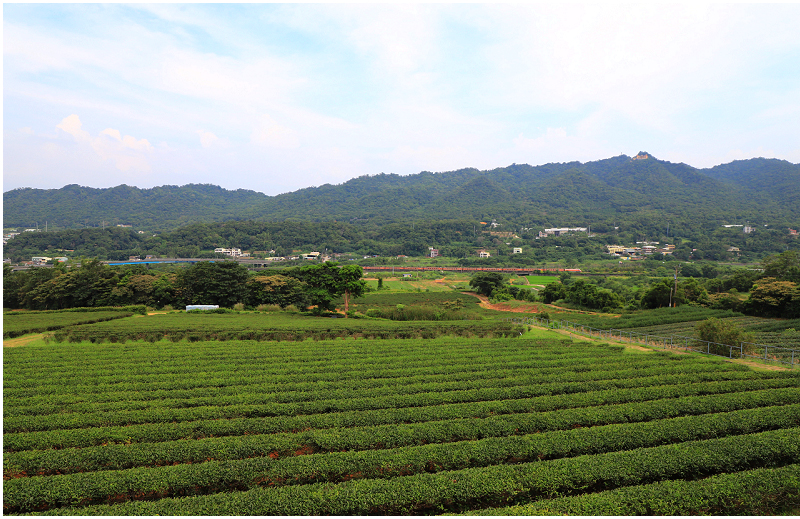
Occasionally, a train passes by in front of the tea plantation. In the distance, Mt. Shuangfeng stands tall at 538 meters. Every early November, the Jiuhu Leisure Farm below showcases a breathtaking sea of Florist's Daisies in full bloom!
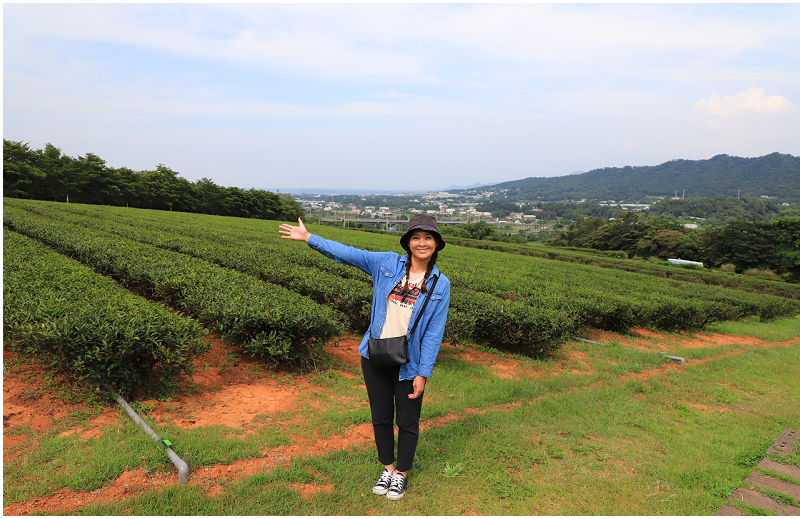
Immerse yourself in the captivating tea gardens of this Hakka town! If time permits, consider arranging a tea-picking and tea-making DIY experience at the plantation.
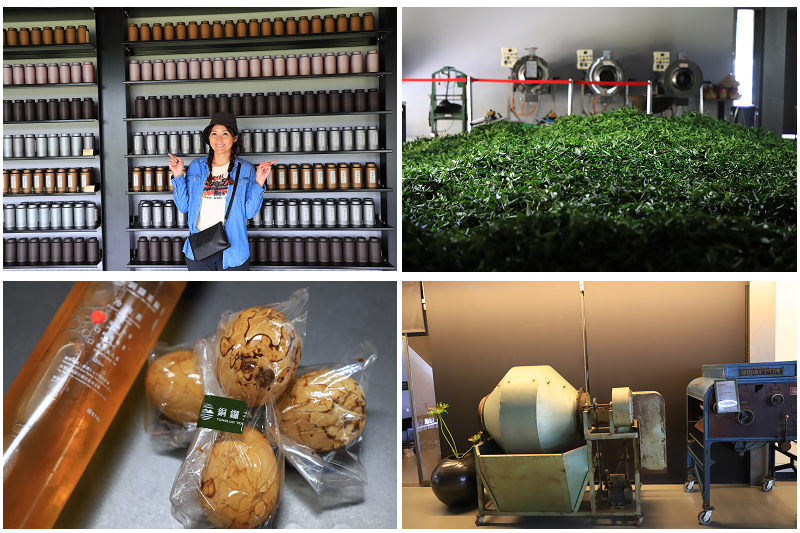
The Tongluo Tea Factory preserves the original tea processing machines. During tea picking, you can observe the indoor withering process. The entire factory is infused with the invigorating aroma of tea. I highly recommend exchanging your entrance ticket for delicious tea eggs and refreshing cold-brewed tea!
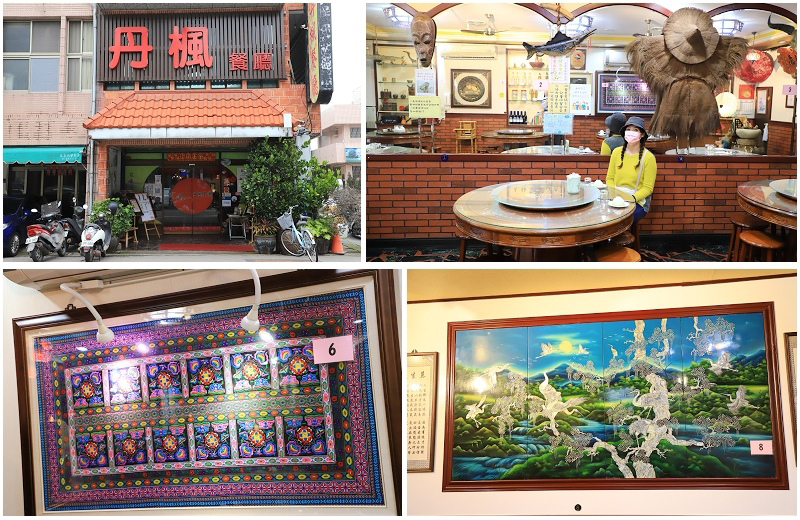
Established in 1988, Danfeng Restaurant has been a renowned Hakka cuisine eatery in Miaoli for 35 years. Throughout the restaurant, you can see the owner's love for overseas travel reflected in the diverse collections from various countries. Boasting a retro-style architecture with red-tiled eaves, the restaurant is conveniently located next to the Tongluo gas station, ensuring hassle-free parking.

Danfeng Restaurant offers a spacious seating area that comfortably accommodates both couples and large groups.

Their signature dish, the Chicken Soup Braised with Daisy Flowers, is a nourishing delight. Served in a copper pot brought back from Guangxi, China, by the owner, the soup exudes elegance and luxury when presented. Brewed with locally sourced daisy flowers, the soup offers a refreshing taste. The chicken is tender and infused with local ingredients, creating an exceptionally delightful flavor.

Another specialty, the Tender Bamboo Shoots with Fatty Intestines, creatively combines tender bamboo shoots and fatty intestines stewed together. The flavorful fatty intestine, paired with the tender bamboo shoots, creates a perfect harmony that complements rice excellently.

Their Hakka-style Pork Knuckle is marinated to perfection. Traditionally served with thin noodles, here it's creatively paired with yellow noodles, resulting in a surprisingly smooth and delicious combination. Many customers ask for extra noodles after savoring this delightful dish. The pork knuckle is a genuine delight for food enthusiasts.

Finally, their Braised Pork with Preserved Vegetables in Steam Bun, despite its slightly salty taste, leaves a subtle sweet aftertaste. I couldn't resist adding more rice to my bowl to accompany this dish. The blend of the bun and braised pork with preserved vegetables is simply delectable.

The Poached Free-Range Chicken is a must-try at Danfeng Restaurant. The sight of the chicken skin and jelly-like gelatin indicates its top-notch quality! Dip it in their special sauce for an enhanced flavor. The chicken meat is firm yet tender, never dry. Those fond of free-range chicken will undoubtedly adore this dish.

For those craving authentic Hakka cuisine in Miaoli, Danfeng Restaurant in Tongluo is an excellent choice. With 35 years of culinary expertise, their exquisite craftsmanship never disappoints.
- Fan Page|Link
- Location|No. 147, Zhongzheng Road, Tongluo Township, Miaoli County
- Phone Number|+886-910-980-701
- Availability|11:00 AM - 1:30 PM, 5:00 PM - 7:00 PM

You don't have to travel all the way to Korea to experience the thrill of cycling along Miaoli’s Old Mountain Line. Embark on an adventure surrounded by towering ancient trees at the southern section of the Longteng Bridge. It feels like being transported to the Ta Prohm Temple in Angkor Wat. Traverse through continuous tunnels reminiscent of the mystical caves from the movie Spirited Away and explore the graceful Neishechuan Iron Bridge and the scenic weir of Liyutan Reservoir. With the rail bike, there's no need to pedal; simply turn the handles like a motorcycle, and the bike will gently move forward.

Our journey follows Route C of the Old Mountain Line. As soon as we set off, we pass through the towering old mountain line railway. On both sides, we see the grandeur of the Longteng Bridge and deep gorges, with lush forests in the distance. The 360-degree scenic views are absolutely soothing.

Sitting on the rail bike feels like soaring through the sky over the Longteng Bridge. The graceful Longteng Bridge, formerly known as Yutengping Bridge, was constructed in 1907 and boasts a century-old history. The appearance of the bridge has withstood the assaults of the 1935 Hsinchu-Taichung Earthquake and the 921 Earthquake. Riding the rail bike along the Old Mountain Line and ascending to a high vantage point, you can behold the quaint remnants of the Longteng Bridge.

Surrounded by majestic mountains and bathed in a gentle breeze, every turn of the railway offers captivating scenery.

Here comes the mystical tunnels from the movie Spirited Away! Tunnels 3 to 6 form a unique group, even featuring the twin tunnels.

The beautifully connected tunnels and lush greenery offer captivating scenery along the way.

The colorful tunnels resemble a surreal realm, and it’s as cool as an air-conditioned room inside.

After passing through Tunnel 5, get ready to make a stop before Tunnel 6. For Tunnel No. 6, you'll need to walk and experience the charm of strolling through the railway tunnel.

The stunning light projection of an underwater world in Tunnel 6 is magnificent. On Route C, you can not only ride through the tunnels on the rail bikes, but also take a leisurely stroll inside the tunnels.

Exiting Tunnel 6 leads to the Neishechuan Iron Bridge. Continuing south will take you to Taian in Taichung. The Neishechuan Iron Bridge is a deck truss bridge, representing the prevalent railway bridge style of the 1938 era.

On the return trip, we stop at the lesser-known southern section of the majestic Longteng Bridge. The ancient yet enchanting bridge seems to have frozen in time.

Overgrown tree roots slowly engulf the Longteng Bridge, creating a sense reminiscent of the Ta Prohm Temple at Angkor Wat. While many are familiar with the northern section of the Longteng Bridge, the southern section is equally enchanting. Riding a rail bike on the Old Mountain Line allows you to explore both the northern and southern sections of the Longteng Bridge. In reality, the middle of the original Longteng Bridge was made of steel and truss beams. The preserved brick piers are in the southern segment!
- Official Website|Link
- Longteng Station Address|No. 20-2, Waizhuang, 5th Neighborhood, Longteng Village, San Yi Township, Miaoli County
- Phone Number|+886-37-878599

Thinking of Hakka villages brings to mind images of indigo dyeing crafts! Early settlers who crossed the seas to Taiwan cultivated the Manyflower Glorybower plant in the mountains, using it to create indigo dye, thus giving birth to the beautiful "Taiwan Blue." However, over time, this craft began to fade away. An unexpected opportunity prompted the owners of the Indigo Dyeing House, a couple, to dedicate themselves to reviving the traditional indigo dyeing craft. Driven by a profound passion for Taiwanese indigenous culture, they committed themselves to revitalizing the traditional indigo dyeing industry, enduring countless years of hardship. In Taiwan, Manyflower Glorybower typically grows wild in the mountains, but the lack of care results in unstable quality. To address this, the Indigo Dyeing House began cultivating this plant in Sanyi, Miaoli, despite the high cost and time-consuming efforts. In fact, our ancestors extensively cultivated this plant to ensure stable quality. Through studying ancient texts and seeking guidance from elders, the owners pieced together the almost-lost techniques and established their Manyflower Glorybower farm. If you visit Sanyi in Miaoli, don't miss the chance to experience indigo dyeing DIY at the Indigo Dyeing House.

The Indigo Dyeing House offers on-site experiences where visitors can participate. The indigo dyeing DIY primarily involves tie-dyeing. Wood pieces are tied onto the fabric using rubber bands. Different tying methods result in entirely distinct patterns and colors, and the instructors meticulously guide everyone through the process.

After the tying process, the fabric undergoes three cycles of immersion and rinsing in the indigo dye vats. In the past, our ancestors lacked access to chemical dyes; they relied on natural dyeing methods to color garments.

Soak the tied fabric in the blue dye vat and then repeatedly rinse and soak it again! It's like reliving the arduous process our ancestors went through to produce indigo-dyed fabrics, evoking an indescribable feeling. When soaking the fabric in the dye vat, continuous kneading and rubbing are needed to ensure the color penetrates deeply into the material.

Each immersion typically lasts around 3 to 5 minutes. After rinsing, the fabric is wrung dry before re-entering the dye vat. Repeat this process three times to complete the dyeing. While this workshop's dyeing process usually involves three cycles, achieving longer-lasting color requires approximately 30 cycles of soaking, which is incredibly laborious. This deepens our appreciation for the traditional art of indigo dyeing even more. The sense of accomplishment after finishing my indigo-dyed bags and fabric is beyond words!

Taiwan's unique jagged weir spillway, the only one of its kind, is located at Miaoli’s Liyutan Reservoir. The last time the stunning sight of overflowing water appeared was over 700 days ago when the reservoir reached full capacity. In the summer of 2021, Taiwan's major reservoirs were nearing full capacity, allowing the spectacular overflow at the jagged weir of Liyutan Reservoir to reappear. The resonating sounds of the waterfall reverberate through the mountains and forests as the water cascades down in graceful curtains. Encircled by a backdrop of mountains, Liyutan Reservoir is undeniably breathtaking. Visit Miaoli's Liyutan Reservoir to witness this dreamlike spectacle of the jagged weir overflowing at full capacity!

Liyutan Reservoir in Miaoli's Sanyi Township has a vast water storage capacity of up to 126 million cubic meters, primarily supplying water to the Miaoli and Greater Taichung areas. During our visit, major reservoirs in Taiwan were close to full capacity, including Liyutan. Admission to visit Liyutan Reservoir is completely free. One highly recommended attraction is the jagged weir, easily located by searching for "鋸齒堰" (Juchiyen) on Google Maps. In addition, there is a sizable parking lot adjacent to the entrance for visitors.
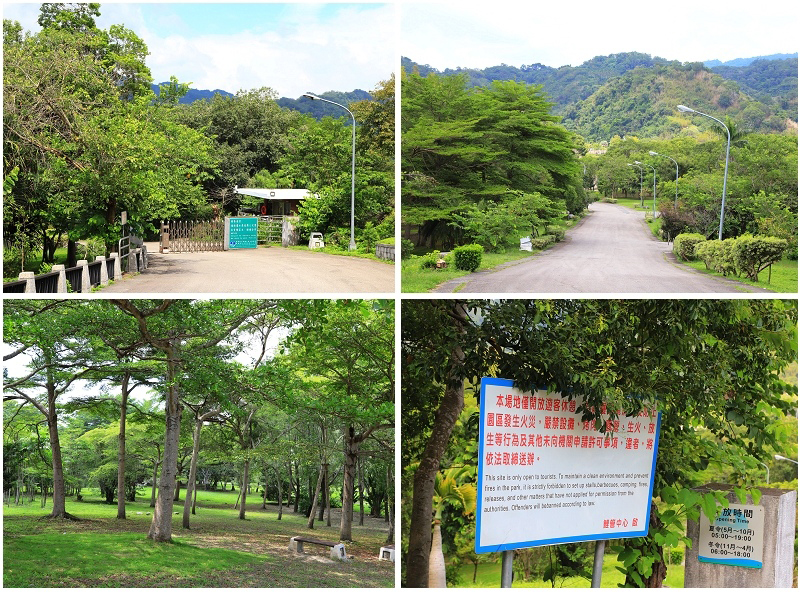
The top left picture shows the entrance to the jagged weir. Upon entry, you'll notice the serene environment. From a distance, you can hear the soothing sound of the waterfall. During our visit, the water level at Liyutan Reservoir was at 99.7%, and witnessing the weir overflowing again was truly remarkable.
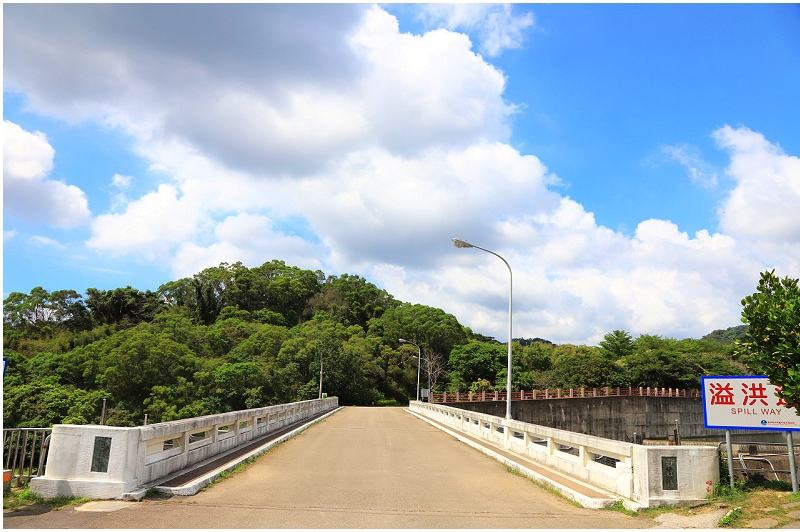
It takes about 4 minutes from the entrance to reach a spot where you can observe the spectacular design of the jagged weir overlooking Liyutan Reservoir.

Adjacent to it, an explanation of the jagged weir’s design principle is provided. Due to terrain constraints, a sawtooth-shaped spillway was designed to optimize space utilization. This design increases the drainage cross-section, thus enhancing the overflow capacity. Typically, the weir's overflow is only visible when the reservoir approaches or reaches its maximum capacity after heavy rainfall.
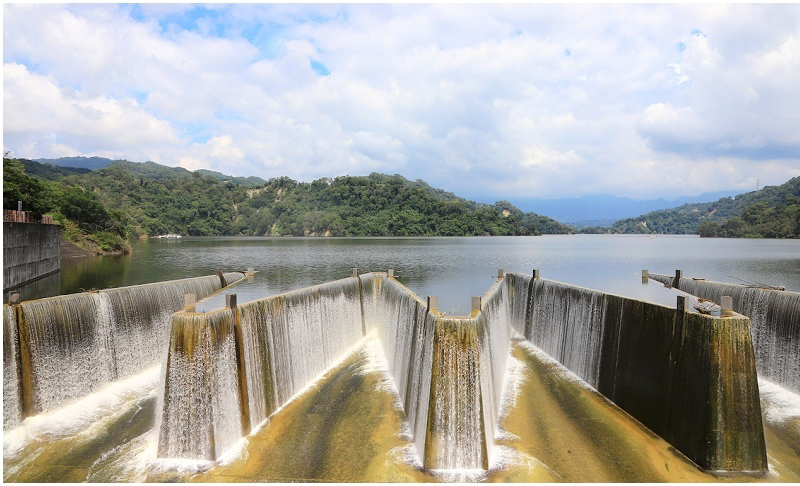
The cascading water curtains at the jagged weir create an incredible scene when Liyutan Reservoir nears its maximum capacity. Prior to your visit, it is advisable to check the reservoir's water levels on the website of the Water Resources Agency, Ministry of Economic Affairs.
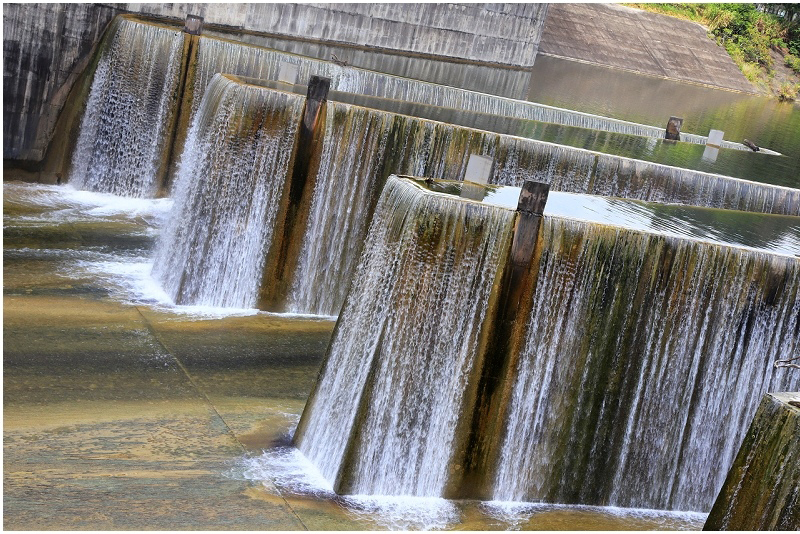
The calming sounds of the jagged weir's cascading waterfalls bring immense relaxation to both the body and mind.
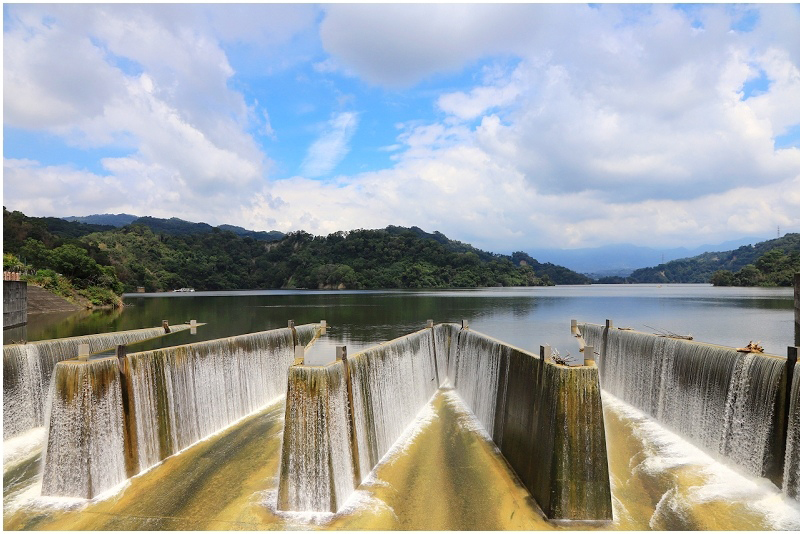
Unlike most reservoirs discharging water powerfully, the jagged weir at Liyutan Reservoir releases water in gentle, trickling streams, using a waterfall to slowly discharge the flood leisurely.

There are multiple viewpoints to observe the jagged weir overflow at Liyutan Reservoir – from the front, right, and left sides. The pavilion on the right side offers a slightly elevated angle, ideal for capturing great photos.

Simply listening to the overflow of the jagged weir is incredibly stress-relieving! It's like a beautiful symphony from nature.
- Official Website|Link
- To locate the jagged weir, search for 'Juchiyen' (鋸齒堰) in Chinese on Google Maps; a large parking lot is located near the entrance.
- Phone Number|+886-37-881130
- Availability|05:00 - 19:00 between May and October, and 06:00 - 18:00 from November to April.

The Bogongtan Ancient Canal Hiking Trail boasts one of the canal caves that were traversed a century ago. It takes approximately 10 minutes to complete the walk, and inside the cave, you might even catch sight of bats. Along this ancient canal hiking trail, you'll encounter serene streams, deep pools, and verdant bamboo forests. To explore the century-old Bogongtan Ancient Canal Hiking Trail and its secret cave, locate it on Google Maps as “Sanliantan Ancient Canal Hiking Trail.” There's a parking lot nearby; facing it, head right. On the upper right side, you'll spot a temple, and on the left side, you'll see the rocky landmark of the Bogongtan Ancient Canal Hiking Trail. It's a minute's walk from the parking area to reach here.

In Miaoli's Dahu, there are a total of 12 canal caves, but only those on the Bogongtan Ancient Canal Hiking Trail and Yayou Canal Hiking Trail remain well-preserved. Currently, the Bogongtan Ancient Canal Hiking Trail is the most accessible and walkable.

The entrance to the Bogongtan Ancient Canal Hiking Trail leads into the forest, accompanied by the delightful sounds of nearby streams.
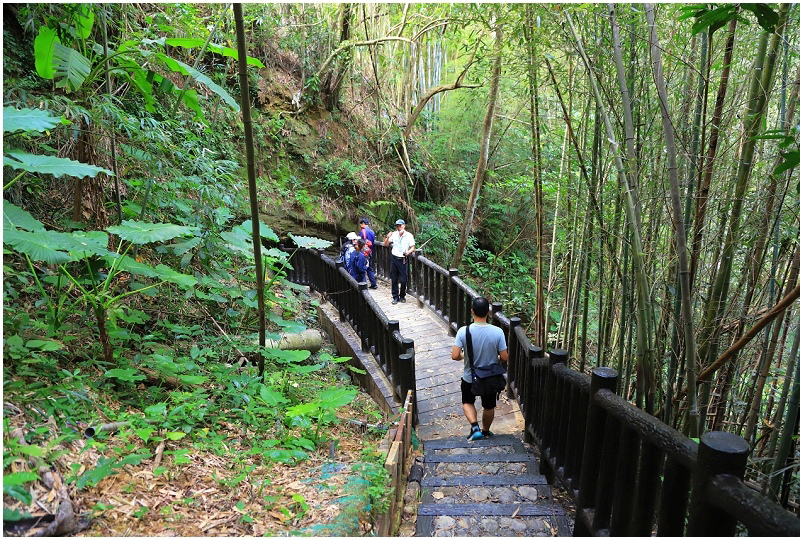
After about a minute's walk from the entrance, you'll encounter the canal cave, a cave that cuts through the waterway.
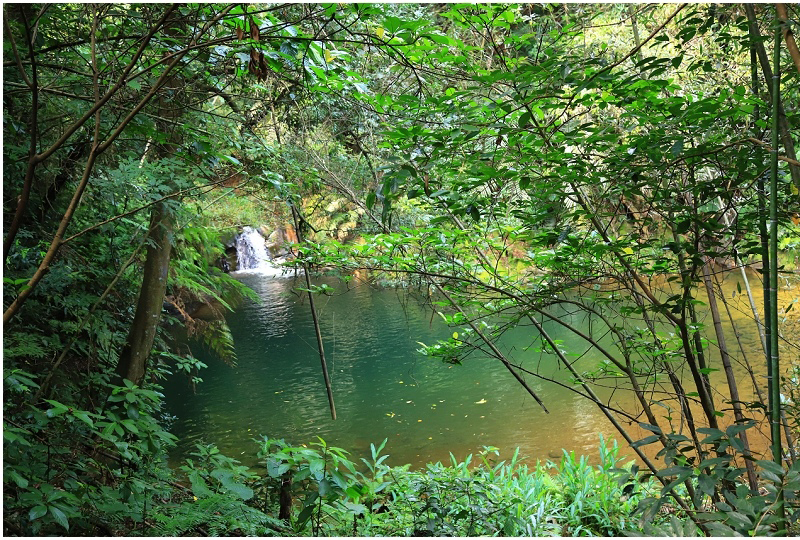
On the right side, you'll catch sight of the lush Sanliantan and one of its deep pools. Over a hundred years ago, indigenous people and Hakka settlers contended for land in this area. Later, a Taiya Princess married a Hakka settler, and together, they cultivated and established life in Miaoli's Dahu region. This union helped in preserving many beautiful landscapes and geological features. The Yayou Canal Cave, another well-preserved ancient canal cave, was named in commemoration of their marriage.
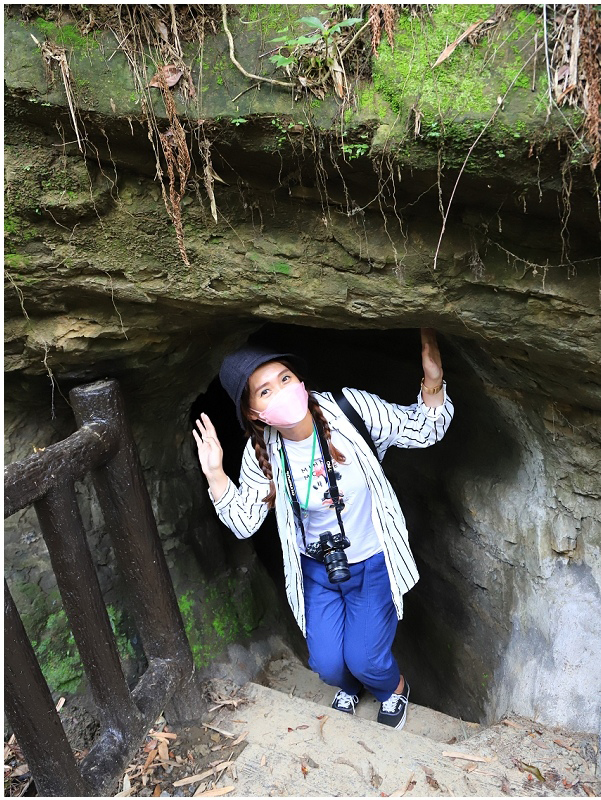
Locals have recently undertaken efforts to restore the environment around the canal cave entrance at the Bogongtan Ancient Canal Hiking Trail. The walk here is now quite pleasant. Initially at the entrance, the cave’s height is about that of a person, but it gradually decreases to half a person's height in the middle. Visitors need to crouch down and proceed carefully. Above, you'll see bat-inhabited caves, so avoid disturbing them to prevent any fluttering movements.

A century ago, our ancestors carved caves by hand to find water sources, giving birth to these canal caves. Nowadays, walking along the Bogongtan Ancient Canal Hiking Trail, you can still sense the hardships and toils of our predecessors on this trail.

The canal cave, with its ancient allure and minimal adornments, evokes the sensation of traversing through time and space.

Let's embark on the adventure! It's suitable for both adults and children.
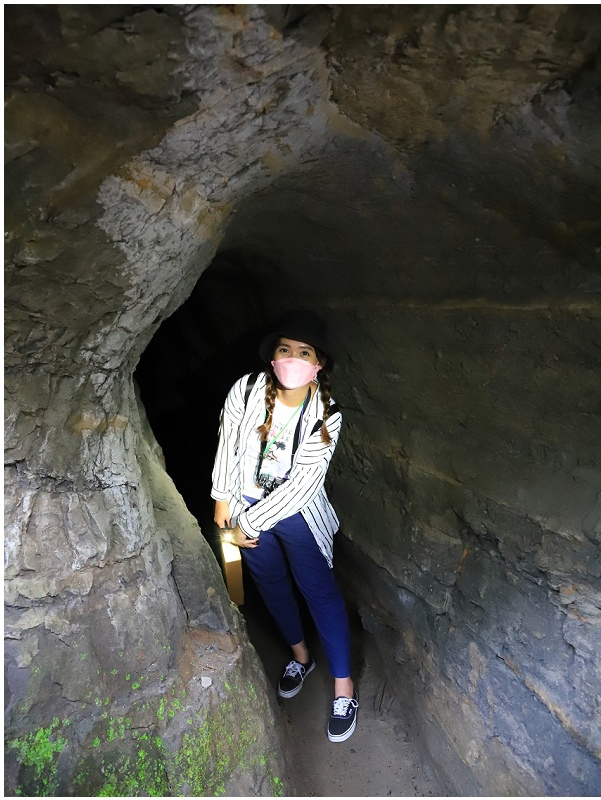
While inside, it's recommended to wear long sleeves and a hat for added comfort and protection against insect bites.
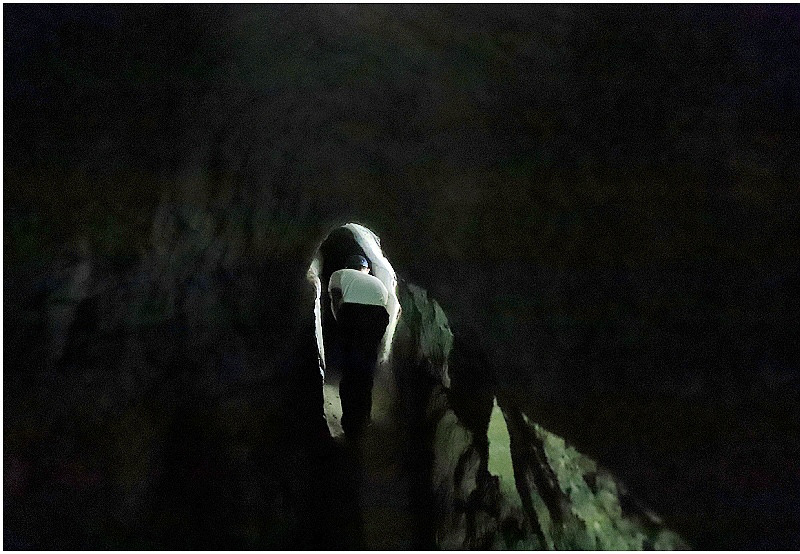
The cave is just about enough for a single person to pass through. Remember to turn on your phone's flashlight or bring a headlamp or torch. The cave at the ancient canal hiking trail is approximately fifty meters long, making the walk truly exhilarating.
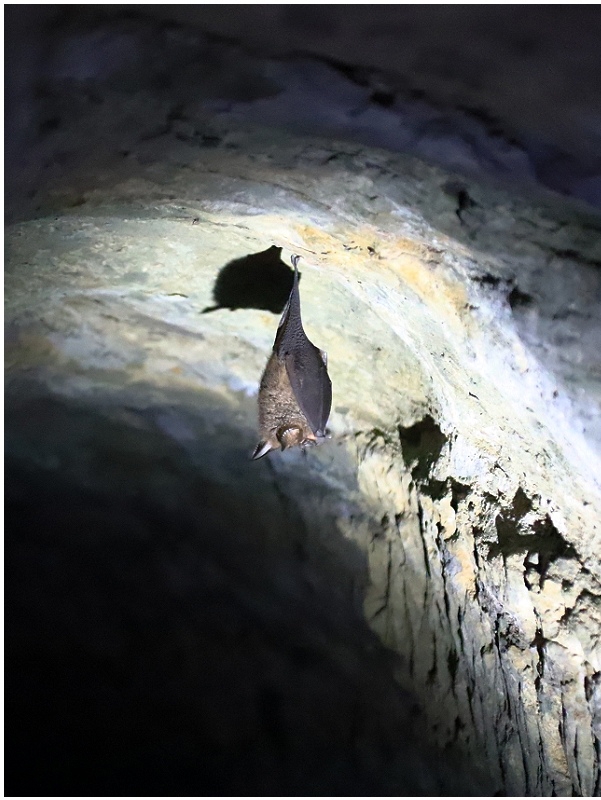
Bats can be spotted on the ceiling. Pass through quietly. Don’t disturb them.
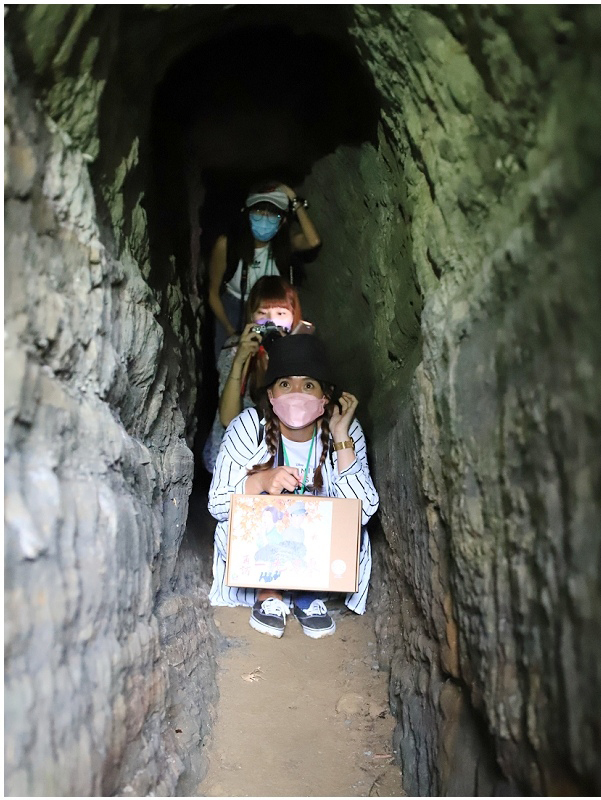
The midsection of the cave is lower, so lower your body and proceed slowly. It feels like an exciting cave exploration.
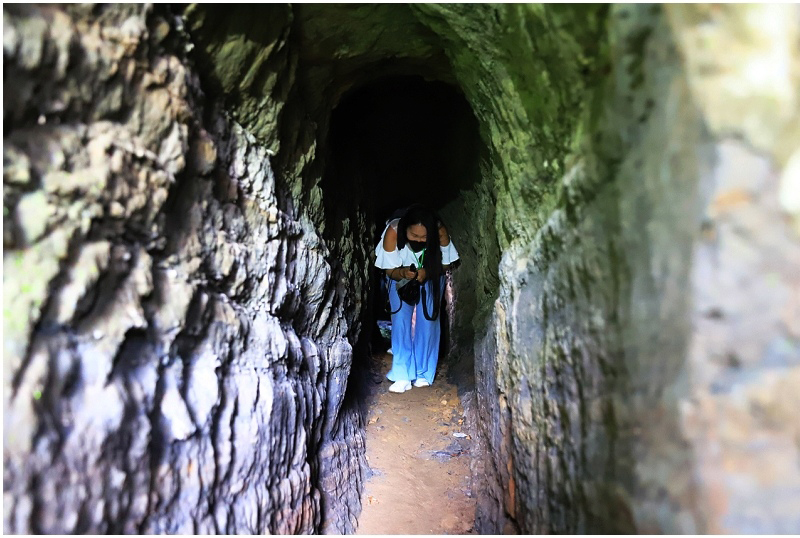
The cave hand-carved by our ancestors is really fascinating!
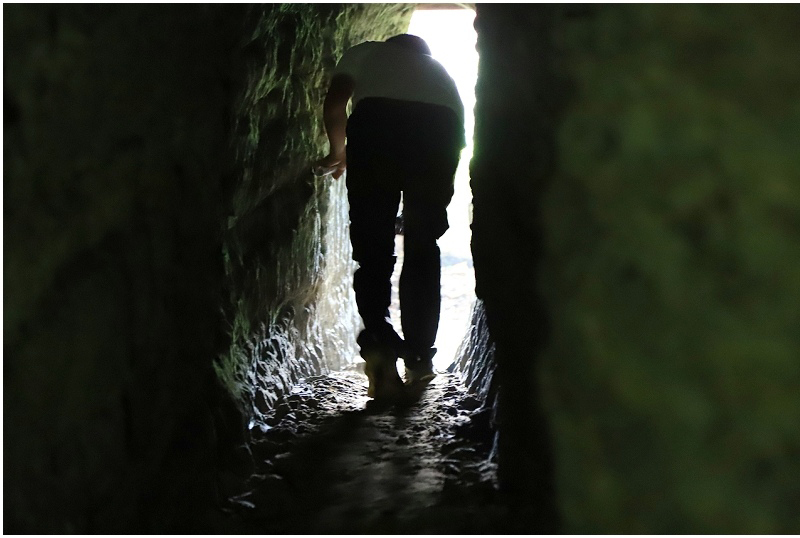
Seeing light in the distance? That's the exit! Get ready to emerge back into the brightness.
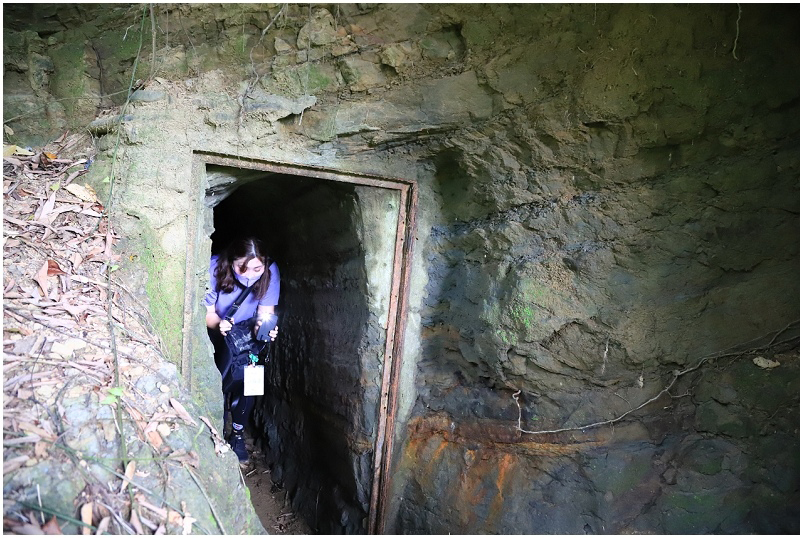
Remember to keep the noise down while walking inside the cave.
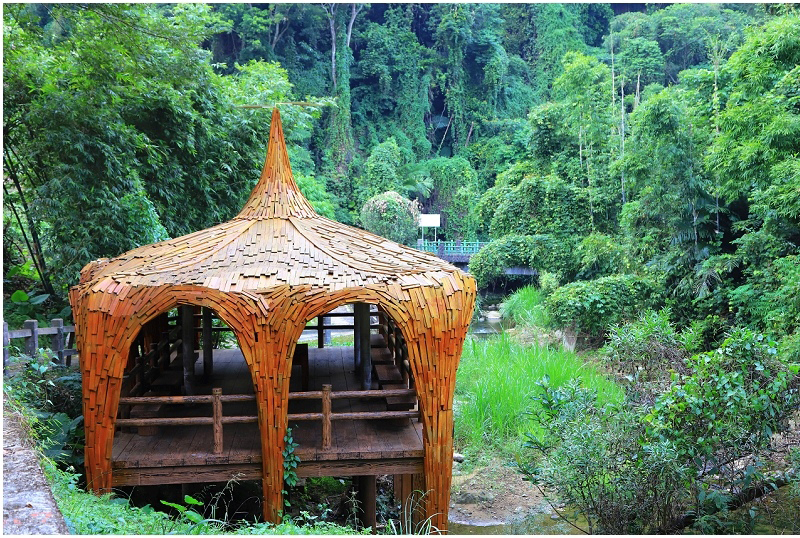
The pavilion here is an artwork crafted by an artist from Hualien. The nearby gentle stream creates a delightful spot to relax and relish the coolness.
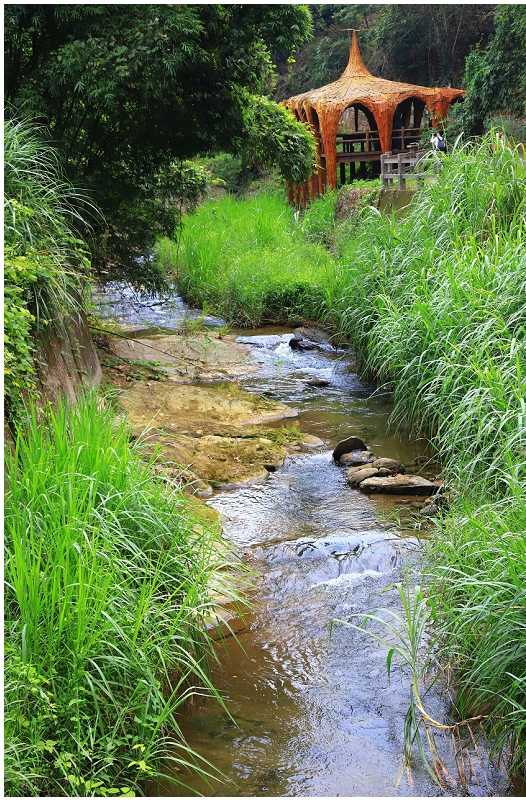
The stunning scenery of Sanliantan is amazing. The Dawo Ecological Park is so well maintained and pollution-free!
- Location|Find Sanliantan Ancient Canal Hiking Trail on Google Maps.
